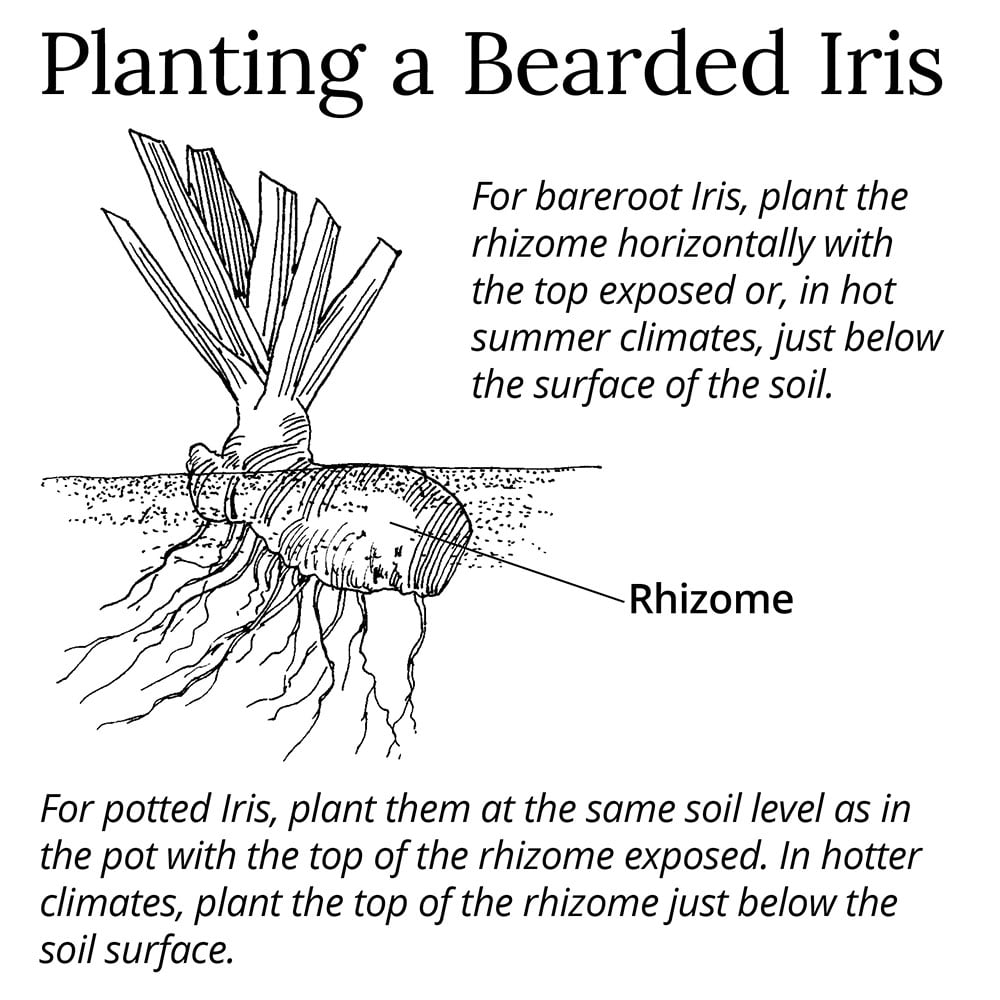
If you're referring to bearded irises, which are a popular type of iris known for their distinctive "beard" on the petals, here's a step-by-step guide on how to plant them:
Timing: Bearded irises are typically planted in late summer to early fall, about 6 to 8 weeks before the first frost date in your area. This allows the plants to establish their root systems before winter and ensures better blooming in the following spring.
Soil and location: Choose a sunny location with well-draining soil for your bearded irises. These irises prefer soil that is slightly acidic to neutral pH. If your soil is heavy or clay-like, you can improve drainage by adding organic matter such as compost or well-rotted manure.
Digging the hole: Dig a hole that is wide and deep enough to accommodate the rhizome of the bearded iris. The hole should be large enough to spread out the roots comfortably. Make a small mound of soil in the center of the hole.
Planting the rhizome: Place the rhizome in the hole, making sure that the top of the rhizome is level with the soil surface. The roots should be spread out on the mound of soil. Backfill the hole with soil, gently firming it around the rhizome to ensure good root-to-soil contact.
Spacing: Space bearded irises approximately 12-18 inches (30-45 cm) apart to allow for their spreading growth habit and to prevent overcrowding. This spacing also allows good airflow, which helps prevent diseases.
Watering: After planting, water the rhizome thoroughly to settle the soil and remove any air pockets. Water regularly during the first few weeks after planting to help the plant establish its roots. Once established, bearded irises are relatively drought-tolerant and can tolerate some dryness between waterings.
Mulching: Apply a layer of organic mulch, such as straw or shredded bark, around the base of the plants. Mulching helps retain soil moisture, suppress weed growth, and regulate soil temperature. Keep the mulch a few inches away from the rhizome to prevent excess moisture and rot.
Care and maintenance: Bearded irises are generally low-maintenance plants. Remove any dead or yellowed foliage as needed. In late fall or early spring, you can trim back the leaves to tidy up the plant and promote good airflow.
Fertilization: Bearded irises are not heavy feeders, but they can benefit from a balanced, slow-release fertilizer or a specific iris fertilizer. Apply the fertilizer in early spring before new growth emerges, following the package instructions for the recommended amount and frequency of application.
Monitoring and division: Monitor the bearded irises for any signs of pests or diseases and take appropriate measures if needed. Bearded irises benefit from division every 3 to 5 years to prevent overcrowding and maintain their vigor. Division is typically done in late summer after they finish blooming. Carefully lift the clumps, separate the rhizomes, and replant them with adequate spacing.
By following these planting and care guidelines, you can enjoy the beauty of bearded irises in your garden.

No comments:
Post a Comment